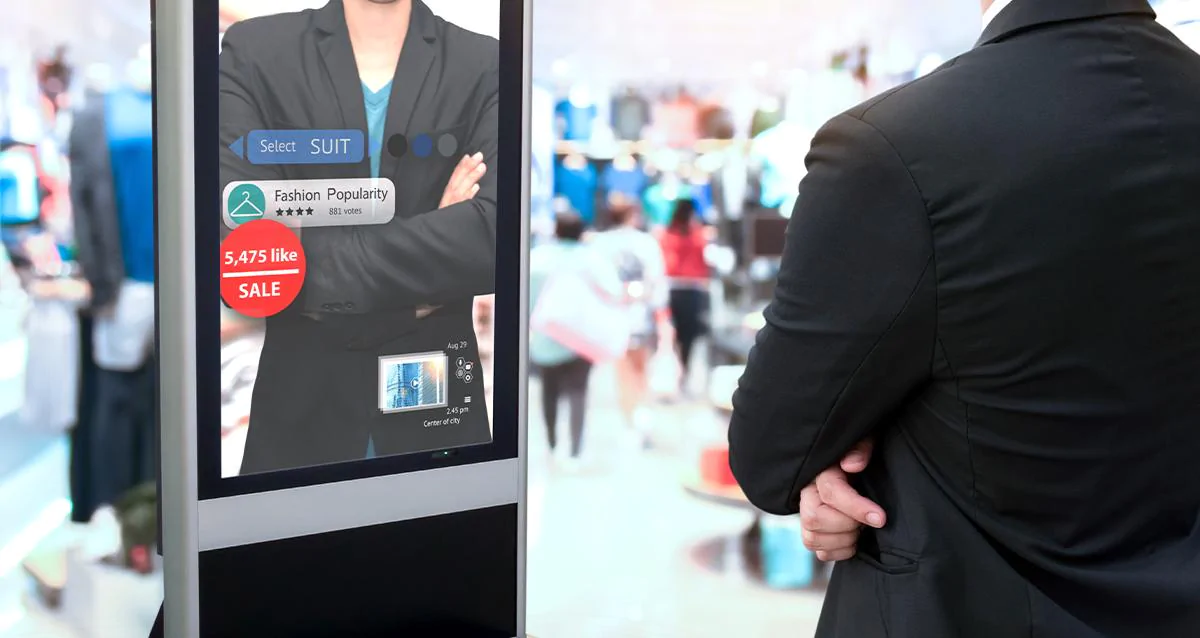Transform Business Through Digital Signage Software and Augmented Reality

Businesses routinely compete for attention, and they use the most efficient technology to do so. One such technology is digital signage. Which is a type of electronic sign.
The display is usually an LCD or LED screen and is fed content by digital signage software, which is a type of content management system. The software can be touch-screen-based functionality or a part of a cloud-based system like Rise Vision’s cloud digital signage solution.
Digital signs are routinely use in restaurants, airports, and retail stores, as well as on the exterior of buildings. Times Square, a popular tourist destination in midtown Manhattan, is replete with these signs.
Custom software development services can help software companies extend the capabilities of digital signage software through the use of augmented reality (AR). These companies will then have an opportunity to attract new clients from several major industries: healthcare, food and beverage, fashion retail, and automotive.
Healthcare
Healthcare facilities have adopted digital signage technology in an effort to offer better service to patients and staff.
Clear, effective communication is a vital part of healthcare and is needed for the health and safety of patients, as explained in an article by Tulane University. The Louisiana-based university also notes that there are barriers to effective communication such as patient discomfort and distrust.
Digital signage and augmented reality can be used to help patients with the use of wayfinding technology, which offers prompt indoor navigation through hospitals. According to an article published in the journal, Sensors, AR-based indoor navigation systems enable users to find places within buildings.
AR technology is becoming an essential tool in healthcare. Grand View Research reported that the healthcare industry is using AR for medical training and surgical visualization.
Food and Beverage
The food and beverage industry has embraced the use of digital signs. Many fast food restaurants offer digital menu displays and touch-screen kiosks.
AR can enhance the dining experience. That’s what marketing professor Wided Batat, Ph.D., describes in his journal article about a restaurant-based augmented reality (AR) experience called Le Petit Chef.
In the article Batat states that she studied that experience and concluded that AR could change the way consumers perceive restaurant dining and could exert influence in five different ways: sensory, affective, behavioral, social, and intellectual.
The artistic collective, Skullmapping, created the Le Petit Chef experience and lists the underlying technology as being 3D projection mapping. Video-footage of the experience shows 3D animated characters being projected onto the dinner plates and table being used by guests. This unique multimedia experience is an example of how augmented reality (AR) can entertain and provide information.
Fashion Retail
Clothing retailers have been using the latest digital display technologies to target consumers. Among those technologies are AR and digital signage.
For example, the retailer, H&M, has already adopted digital signage for customer engagement. That’s what Digital Signage Today noted in an article about the retailer. The online news publication also wrote that H&M had used an interactive mirror at a store in Times Square, NY. The publication added that customers were able to use the mirror to take selfies for use on magazine covers.
Google has also shown great interest in interactive technology. Google developed the AR headset, Google Glass, and has continued work on an enterprise version of the headset. In addition, the company surveyed consumers in 2019 and found that 66 percent of the respondents interested in using AR for shopping assistance.
That’s why software companies should focus on creating digital signage software that has AR functionality. Doing so will enable them to profit from serving retailers, as well as companies in the automotive industry.
Automotive
In the automotive industry, virtual showrooms are part of a growing trend. In which augmented reality (AR) technology is used to blend digital content with the real-world environment for the car-buying experience. That’s what product sourcing company Thomasnet notes in an article about the trend. In the article, the company also says that AR can be used to show customers what a Ferrari might look like when parked in their garage.
AR isn’t just a passing fad, though. In a recent report, MarketsandMarkets projects that the AR automotive market will achieve a market size of $6.79 billion by 2025. The market research company also states that the key factors driving the market include an increase in the use of advanced technologies by manufacturers and greater consumer demand for enhanced in-vehicle safety features.
Digital Signage Software Development
Digital signage solutions with augmented reality features can help businesses and their customers across numerous industries. These industries may be healthcare, food and beverage, fashion retail, and automotive.
Software companies can take on the considerable task of providing these solutions to businesses with the help of a software development company that specializes in digital signage solutions and augmented reality software development. With such capabilities they can create world-class digital signage solutions, including cloud-based digital signage software that facilitates effortless scalability and easy remote access and management.
Author Bio:
John Bailey
John Bailey is an industry expert within the healthcare and gaming software landscapes. He works at Chetu Inc., Plantation, Fla., a custom software development provider and thought-leader within the IT community. He offers commentary on changing tides within the healthcare and gaming industries.




